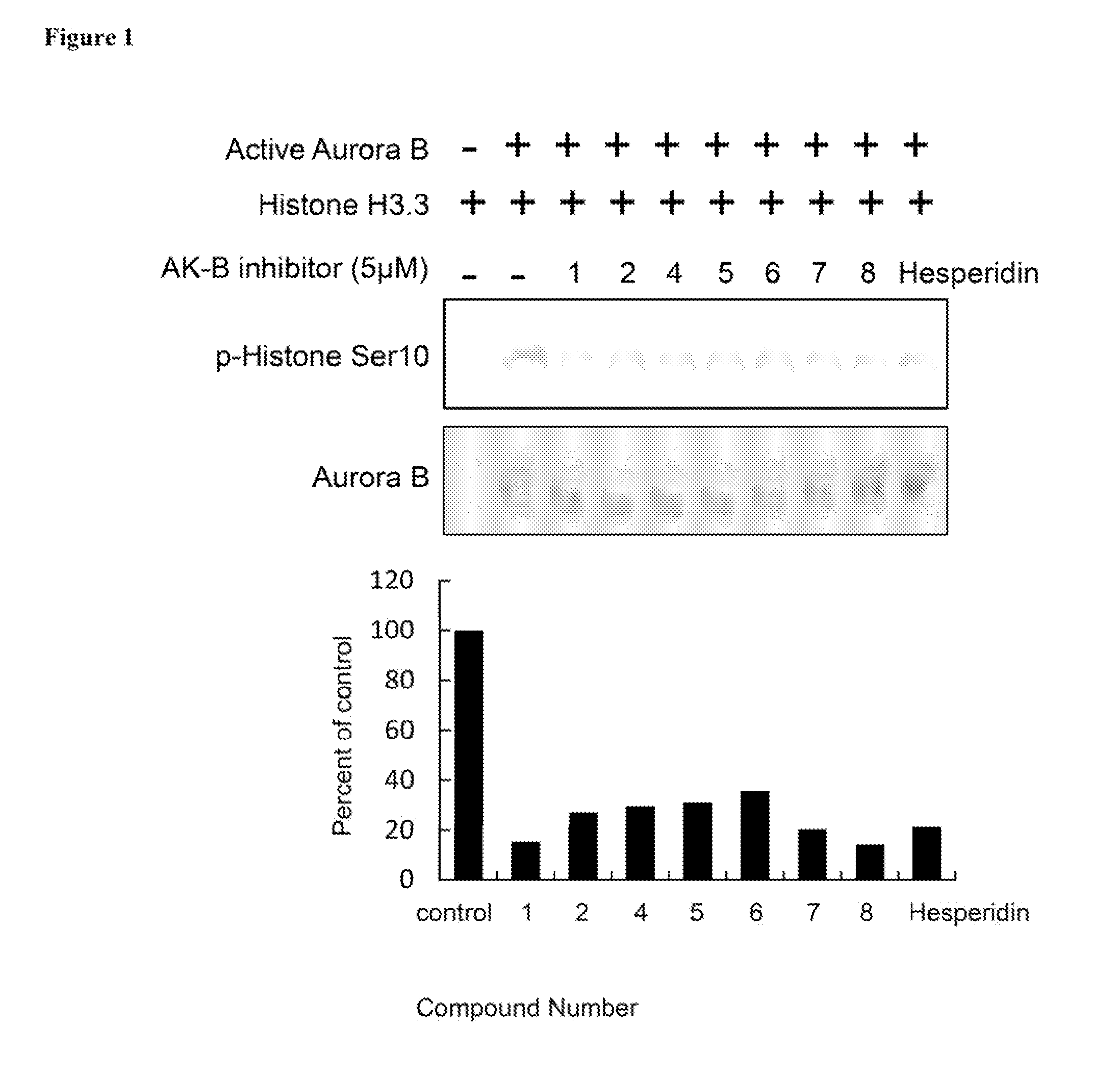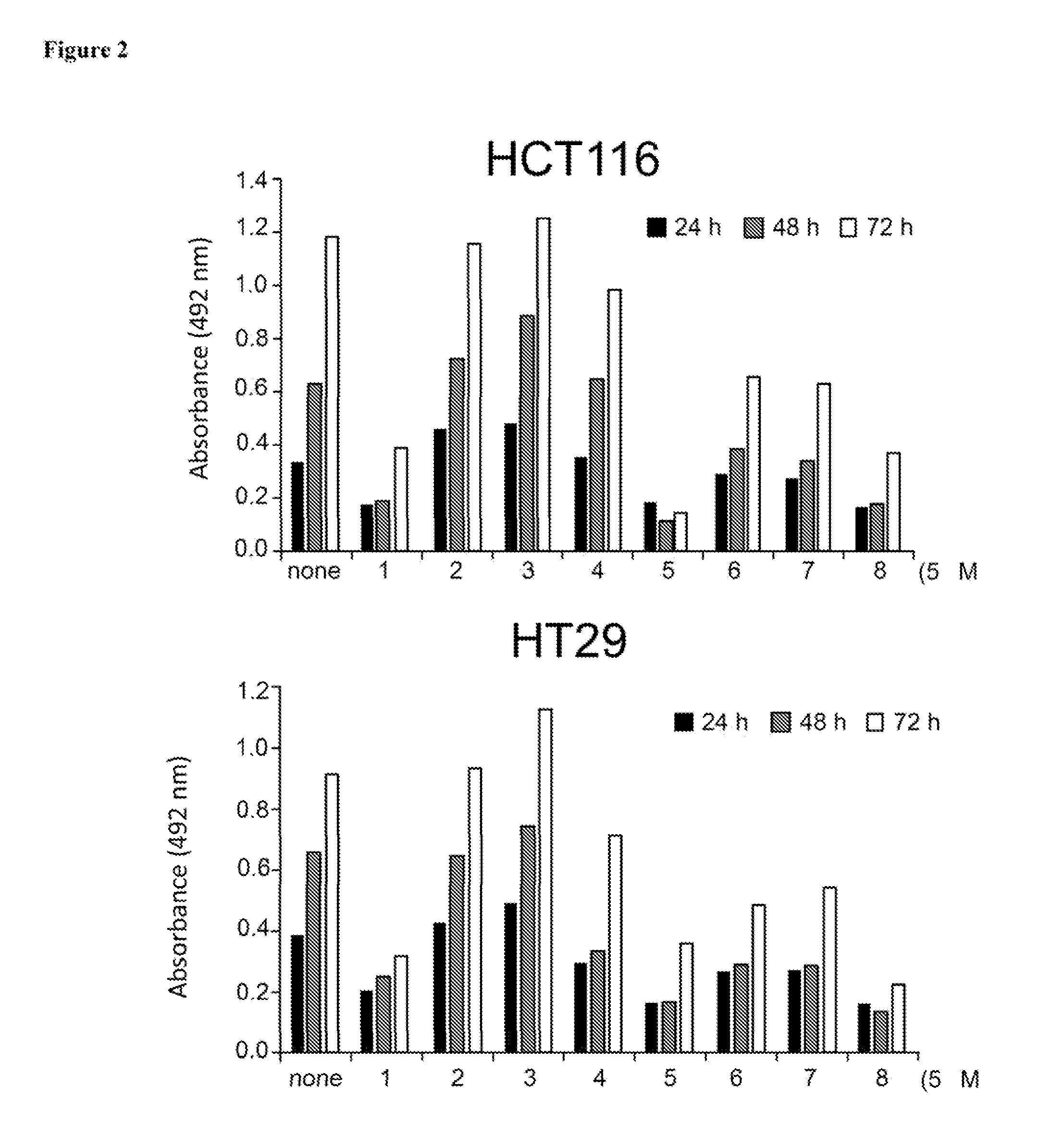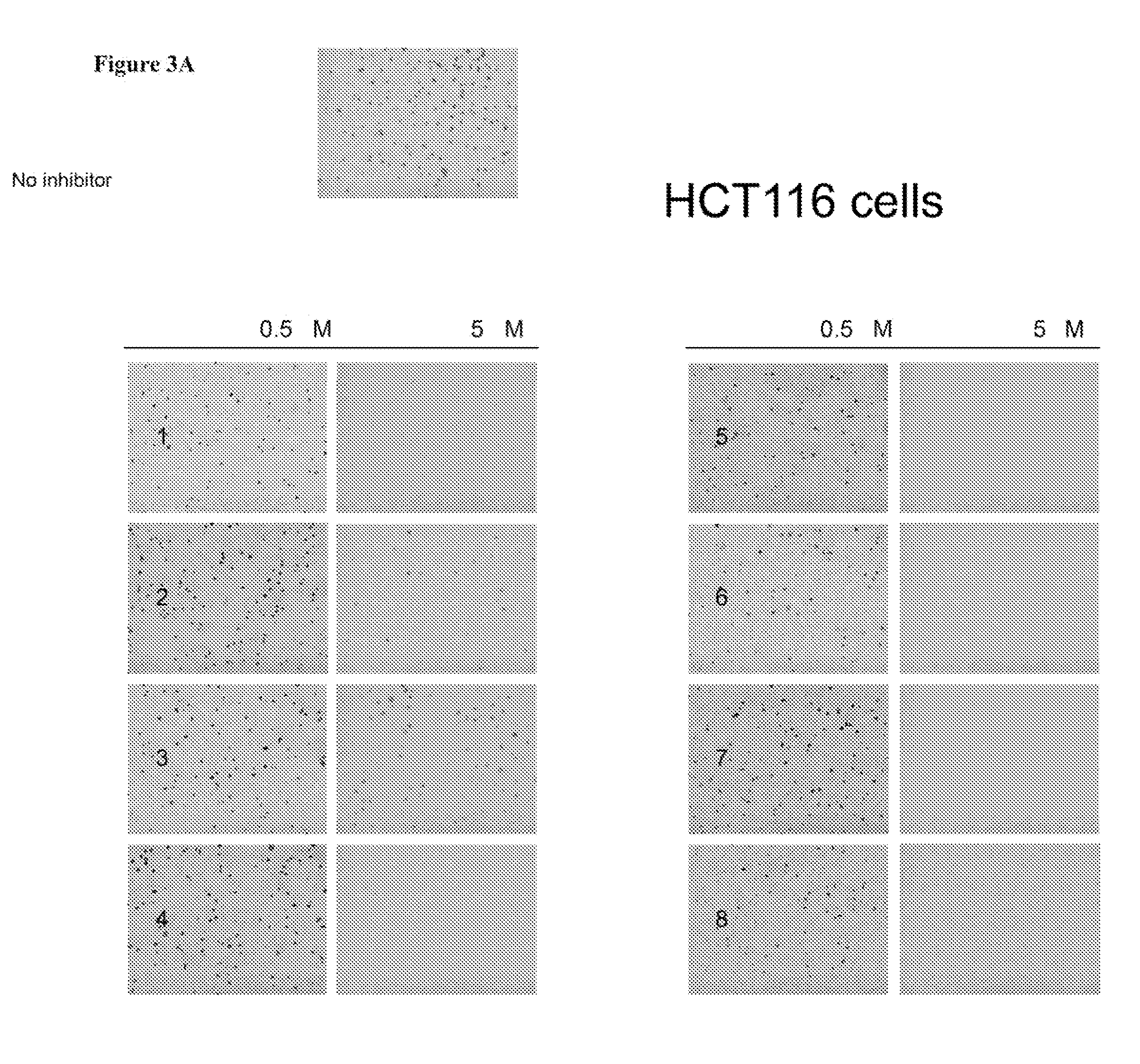Aurora kinase inhibitors
a technology of aurora kinase and inhibitors, which is applied in the direction of biocide, heterocyclic compound active ingredients, drug compositions, etc., can solve the problems that no clinical use approval has been achieved by the fda
- Summary
- Abstract
- Description
- Claims
- Application Information
AI Technical Summary
Benefits of technology
Problems solved by technology
Method used
Image
Examples
example 1
Preparation of Compound 1.
[0066]
[0067]To a stirred solution of isatin (10 mmol) and diethylamine (0.3 mmol) in ethanol was added 3,4-(Methylenedioxy)benzylideneacetone (10 mmol). The resulting mixture was stirred at room temperature for 12 h. The solid separated out was filtered and washed with ether and ethyl acetate. The obtained yellow solid was recrystallized from ethanol to give 2.8 g of A1. 1H NMR (400 MHz, d6-DMSO): 10.21 (s, 1H), 7.45 (d, 1H, J=16.05), 7.30 (s, 1H), 7.25 (d, 1H, J=7.44 Hz), 7.13-7.18 (m, 2H), 6.95 (d, 1H, J=8.04 Hz), 6.87 (t, 1H, J=7.44 Hz), 6.75 (d, 1H, J=7.64 Hz), 6.61 (d, 1H, J=16.24 Hz), 6.07 (s, 2H), 6.01 (s, 1H), 3.60 (d, 1H, J=16.44 Hz), 3.18 (d, 1H, J=16.44 Hz).
[0068]To a stirred suspension of A1 (0.5 g) in ethanol (15 mL) was added 37% HCl (5 mL). The reaction mixture was stirred at room temperature for 7 days or heat at 80° C. for 30 min. After this time, the obtained red solid (compound 1) was filtered and purified by recrystallization from ethano...
example 2
Preparation of Compound 4.
[0069]
[0070]Compound 4 was prepared according to the method described in Example 1 using 4-Chloroisatin (10 mmol) and 3,4-(Methylenedioxy)benzylideneacetone (10 mmol).
[0071]Compound A2: 1H NMR (400 MHz, d6-DMSO): 10.47 (s, 1H), 7.49 (d, 1H, J=16.24 Hz), 7.33 (s, 1H), 7.17 (m, 2H), 6.95 (d, 1H, J=8.02 Hz), 6.84 (d, 1H, J=8.22 Hz), 6.75 (d, 1H, J=7.63 Hz), 6.63 (d, 1H, J=16.24 Hz), 6.18 (s, 1H), 6.07 (s, 2H), 3.98 (d, 1H, J=17.02 Hz), 3.30 (d, 1H, J=17.02 Hz).
[0072]Compound 4: MS (ESI): Calculated: 353.0455 Obtained: 354.0047 (M+1) 355.0081 (M+2) 356.0019 (M+3).
example 3
Preparation of Compound 5
[0073]
[0074]To a stirred solution of isatin (10 mmol) and diethylamine (0.3 mmol) in ethanol was added 3,4,5-trimethoxybenzylideneacetone (10 mmol). The resulting mixture was stirred at room temperature for 12 h. After this time, the solution was evaporated and purified by column chromatography to give A3. 1H NMR (400 MHz, d6-DMSO): 10.22 (s, 1H), 7.50 (d, 1H, J=16.25), 7.26 (d, 1H, J=7.44 Hz), 7.15 (t, 1H, J=7.63 Hz), 7.01 (s, 2H), 6.88 (t, 1H, J=7.43 Hz), 6.71-6.79 (m, 2H), 6.03 (s, 1H), 3.80 (s, 6H), 3.68 (s, 3H), 3.63 (d, 1H, J=16.24 Hz), 3.18 (d, 1H, J=16.44 Hz).
[0075]To a stirred solution of A3 (50 mg) in ethanol (2 mL) was added 37% HCl (0.5 mL). The reaction mixture was stirred at room temperature for 3 h. After this period, the obtained red solid was filtered and purified by recrystallization from ethanol to provide Compound 5. MS (ESI): Calculated: 365.1263; Obtained: 366.0841 (M+1).
PUM
 Login to View More
Login to View More Abstract
Description
Claims
Application Information
 Login to View More
Login to View More - R&D
- Intellectual Property
- Life Sciences
- Materials
- Tech Scout
- Unparalleled Data Quality
- Higher Quality Content
- 60% Fewer Hallucinations
Browse by: Latest US Patents, China's latest patents, Technical Efficacy Thesaurus, Application Domain, Technology Topic, Popular Technical Reports.
© 2025 PatSnap. All rights reserved.Legal|Privacy policy|Modern Slavery Act Transparency Statement|Sitemap|About US| Contact US: help@patsnap.com



